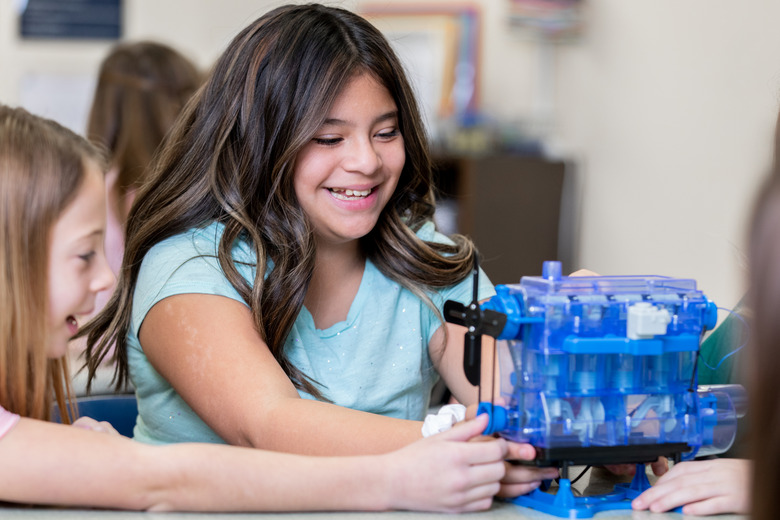How To Make Glowing Water For A Science Fair Project
You can make glowing water for a science fair project with very little preparation. The simplest way to do it is to place tonic water under black light. The quinine in the water will glow. You can also use a highlighter pen and some regular water. You can create a glowing-water experiment in just a few minutes.
Step 1
Open the highlighter pen carefully and remove the felt from inside it. Most felt pens can be opened by prying off the very top piece with your fingernails, or by unscrewing the base.
Step 2
Fill a water bottle with a very small amount of water, then soak the felt inside the liquid. The amount of water you choose to use is not set in stone, but keep in mind that the less used, the higher the concentration of phosphors — the stuff that glows. The higher the concentration of phosphors, the greater the glowing effect will be.
Step 3
Go into a dark room and turn on the black light. Place the water bottle near the light and watch the phosphorus glow. The ultraviolet light being radiated from the black light will cause the phosphors from the pen's ink to emit light, which is known as luminescence. The type of luminescence in this black light experiment is technically referred to as fluorescence.
Things Needed
- Water
- Bottle
- Highlighter pen
- Black light
- Dark room or enclosure
TL;DR (Too Long; Didn't Read)
Construct a small isolation booth if a dark room is not available at the science fair.
If you use tonic water, be sure not to use any other type of water. For example, club soda does not contain quinine and won't work.
Cite This Article
MLA
Ceville, Robert. "How To Make Glowing Water For A Science Fair Project" sciencing.com, https://www.sciencing.com/make-water-science-fair-project-8302785/. 26 April 2011.
APA
Ceville, Robert. (2011, April 26). How To Make Glowing Water For A Science Fair Project. sciencing.com. Retrieved from https://www.sciencing.com/make-water-science-fair-project-8302785/
Chicago
Ceville, Robert. How To Make Glowing Water For A Science Fair Project last modified August 30, 2022. https://www.sciencing.com/make-water-science-fair-project-8302785/
